How to eliminate clogging in the sink: how and with what to break a clogged section in the pipeline
It is unlikely that there will be an adult who has never had to clean the blockages in the sinks. Such troubles happen with almost everyone, and usually not on time - at times when there is no way to call a specialist, and you need to use the device urgently.
In this material, we will figure out how to eliminate clogging in the sink with minimal time and how to handle plumbing so that no more such problems arise. For this, we will consider the 5 best tools for the mechanical elimination of blockages, and also name the most effective and popular chemicals among users.
The content of the article:
Causes of Shell Clogging
A blockage is a mechanical barrier that prevents water from flowing normally into the sewer system. Typically, such an obstacle occurs due to the accumulation of debris (dirt, hair, fat), which is formed in the siphon or pipe.
Determining that the sink is clogged is very simple: the water slowly drains into the sewer, and an unpleasant odor appears in the room over time.
Errors in the installation of sewage elements
Clogging may occur if the elements of the sewer system are not mounted correctly. When the angle of the pipes is insufficient, solid particles remain in them.
Gradually, they accumulate, mix with fat and detergent residues, stick to the inner surfaces of the walls of sewer pipes, narrowing their diameter.
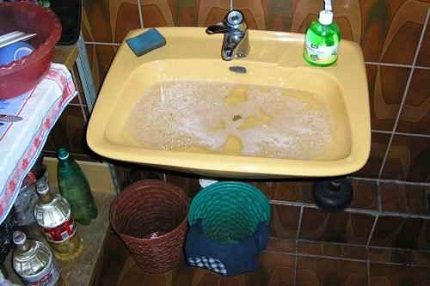
Incorrect operation of the sink
If the siphon does not have a mesh for filtering effluents, solid particles, debris, hair, sand and even small objects get into it with water.
Gradually, the siphon becomes clogged. Sooner or later, a plug of dirt forms, which practically blocks the pipe, reduces clearance and retains water.
Use of cast iron sewer pipes
Frequent blockages are a “disease” of cast-iron sewers. The inner surface of the pipes is rough, which contributes to the adherence of grease and dirt. Gradually, a thick layer of deposits forms, which becomes the cause of blockages. To prevent this from happening, regular preventive measures should be taken.
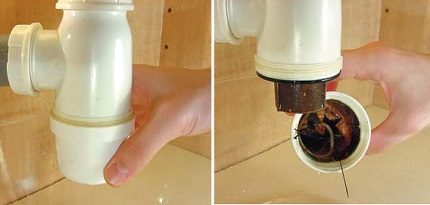
Blockages do not appear instantly. This is usually a lengthy process, and determining the cause of a problem is not always easy. The first thing to do is to eliminate the plug, but if the sewage system is clogged up often, you still have to do diagnostics of the system and take measures to prevent malfunctions in its operation.
In addition to sinks and other plumbing, as well as pipes, they can suffer from blockages. We spoke in more detail about the problem and methods of elimination in our other articles:
- How to eliminate clogging in the bathroom: an overview of ways to clean the sewer
- What to do if a toilet clogged: how to diagnose a blockage and eliminate it
- How to eliminate clogging in pipes at home: the best means and methods of cleaning
TOP-5 tools for mechanical cleaning
All methods of cleaning the sewer can be divided into two types - mechanical and chemical. The first involves the destruction of cork with the help of special devices or improvised means. Methods of the second type are based on the use of household chemicals or “folk recipes”.
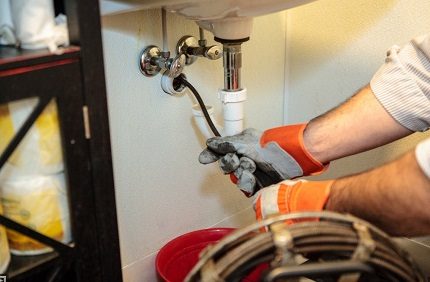
Both types of products have their own characteristics, and they should be taken into account when choosing how to clean the blockage in the pipe or sink.
Tool # 1 - sink plunger
If in doubt, how and what is the best way to break the blockage in the sink, select a plunger. This is one of the safest and most reliable tools for cleaning sewers. It is an elastic hemisphere made of rubber or silicone attached to a handle.
When buying a tool, it is important to choose a fixture with a nozzle that will completely cover the drain hole of the sink. The larger the nozzle, the greater the compression effect it will have on the blockage, which means it will pierce it faster and more efficiently.
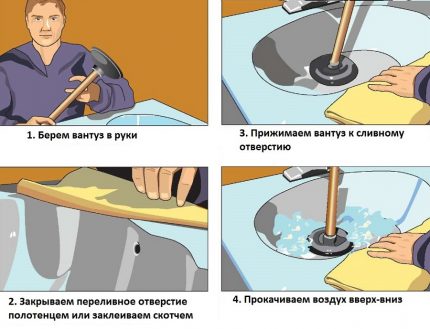
In addition to the usual plungers, there are also pneumatic ones. They look like bicycle pumps. Such tools are easy to use, convenient and reliable. Their only drawback is the high price, so most often they are bought by professional plumbers.
Tool # 2 - plumbing cable
It is metal (usually steel) cable with a handle for which you can rotate the tool, pushing it into the sewer pipe. The appliance is ideal for cleaning blockages, but care must be taken when using it. it is easy to damage the plastic elements of the system.
The cable can be bought at a hardware store or made independently. If handled with care, it can last several decades. All that is needed is to rinse it after use, wipe it and lubricate it with machine oil. The folded tool takes up a minimum of space, the main thing is not to store it in wet rooms.
If for some reason it is difficult to unscrew the siphon mounts or if a blockage has formed in it and cannot be cleaned, a homemade plastic wire rope from the bottle can be the way out.
It will not damage the vulnerable parts of the sewer system and will cope with a small blockage. Such a tool is easy to make yourself.
When using a cable from a bottle, you must be careful and rotate very carefully so that the tape does not tear. Otherwise, it may get stuck in the sewer, and the situation will only get worse.
After use, do not throw away a homemade cable. It is washed, dried, folded and stored. He can help out more than once.
Tool # 3 - Flexible Shaft
A flexible shaft is an advanced analogue of a cable. It is more thick and long, suitable for cleaning wide pipes. The tool is made of a thick cable with a diameter of at least 9 mm, the entire length of which is wrapped with a coil spring with a thickness of about 5 mm. The total diameter of the tool can reach 20-28 mm, and its length is 60 m.
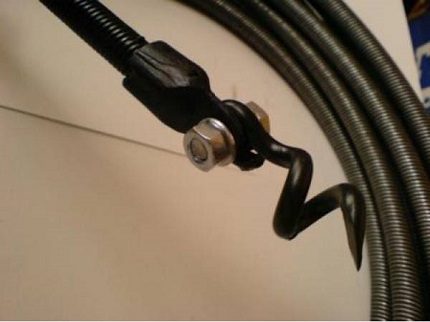
The device is used to deal with complex blockages if the cork formed in the bend of the pipe, where plumbing tools of a more “modest” length are not reached.
Tool # 4 - Cleaning Wire
Clogging can be eliminated using a special wire with a nozzle. It is used in the same way as a cable. Features of the tool are the smaller thickness and the ability to complete with various nozzles.
The device is universal, suitable both for cleaning sinks and for extracting objects that have fallen into a well or a well.
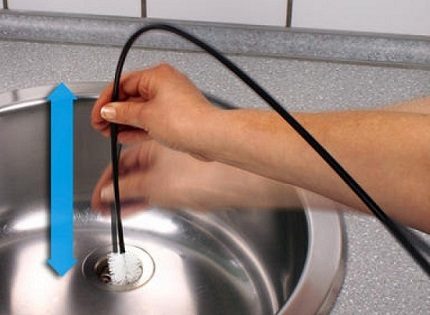
The main disadvantage of the wire is that it is deformed when used. Due to rotation, the straight tool gradually acquires a spiral shape, which complicates its subsequent use. Therefore, metal wire is considered a less reliable and durable tool than a cable or flexible shaft.
Tool # 5 - metal tape
Another useful tool for cleaning blockages is steel tape. The fixture is designed for long pipes. It is a flat strip of metal 2.5-3 cm wide, at the end of which a small "peak" is attached.
The advantages of the device are convenience and durability. There are tapes of various lengths on sale (from 7 to 30 m), and each owner of an apartment or house can choose a tool suitable for his sewer system.
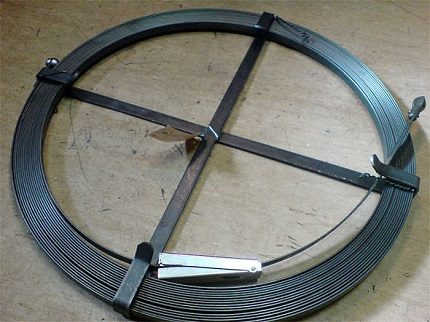
The list of mechanical tools with which you can clean the blockage in the sink is extensive. The described devices are considered the most convenient, but there are other options. You can always find exactly the tool that will be most suitable for a particular system. It is definitely worth buying and storing at home in case of sewage problems.
Chemicals for eliminating blockages
Household chemicals for sewage make life easier for people who do not have the opportunity to use tools for mechanical cleaning. The advantages of the means of industrial production are undeniable: they act quickly, efficiently, and for their application no special efforts are required. Household chemicals are used not only to eliminate, but also to prevent blockages.
Chemical compounds have disadvantages compared to mechanical tools. Too aggressive aids can damage the plastic drain. Another minus - they are harmful to the environment. These are good reasons to consider the appropriateness of their use.
The principle of action of chemical compounds is simple: they dissolve organic substances. Grease, hair that gets into the sewer, softens and is easily washed off with hot water. After applying the funds on the inner surfaces of the pipes there are no deposits that make it difficult to use sewage. The walls become smooth and pass sewage well.
Sewer household chemicals may contain acids or alkalis. The former cope well with fat and are better suited for kitchen sinks, while the latter should be used in bathrooms and toilets, as they dissolve the hair, the remnants of detergents and cleaners, settled on the pipes.
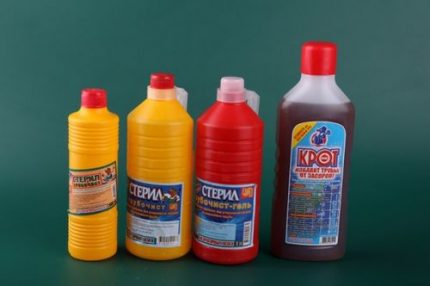
Means vary in form of release. They can be liquid, granular or gel. It is believed that powders and granules are most effective, but if used improperly, they can damage plastic pipes. The action of liquid products is the mildest, but they are not concentrated enough.
The generally accepted ideas about the effectiveness of various forms of funds are not always confirmed in practice, therefore, it is reasonable to select chemistry by brand and description on the package. We recommend that you familiarize yourself with top rated from blockages.
When using, be sure to read the manufacturer's information and strictly follow the instructions.

There are several general rules that should be followed when cleaning the sink with chemicals:
- Be sure to open windows and doors to enhance airflow. It is advisable to cover the mouth and nose with a mask. If it is not, then try not to even breathe in the corrosive fumes.
- Hands should be protected with gloves.. If the composition gets on the skin, it must immediately be washed off under a powerful stream of cold water. Hot water and detergents are not recommended.
- Use chemical carefully and leave exactly for the period specified in the instructions. During this period, do not drain the water into the sink.
Some housewives neglect instructions and leave household chemicals in the sink overnight, believing that this improves the result. If you have plastic pipes, such experiments are dangerous because caustic compounds damage materials. Sewerage can leak, and then you will have to seal it or even replace the pipe section.

For people who are worried about the environment and do not want to use aggressive chemistry, alternative ("folk") remedies are available - citric acid, soda and vinegar.
These substances do not so quickly and efficiently clean the blockages, but they are safe and perfect for preventive measures. How to use them can be seen in the video below.
Conclusions and useful video on the topic
Blockages are different. Some are easy to get rid of just by flushing the sewer. hot water, but there are cases when mud plugs become a real problem. There are many methods to get rid of them. We offer a small video review that will help you choose the best ways and means.
How and how to eliminate clogging in the sink is described in the video below:
We offer detailed video instructions for cleaning the sink with a plunger:
The blockage can be cleaned with soda and vinegar, or with a mixture of detergent and chlorine-based chemicals. How to do this is shown in the video:
Is it possible to get rid of blockages forever? The hero of the next video is sure that this is possible. His method:
Frequent blockages are a good reason to seek the help of a professional plumber. A problem may arise due to displacement or depressurization of sewer system elements.
If the sink is clogged infrequently, then select any of the proposed methods for solving the problem and use it. It’s easy to clean the sewer with your own hands, and you will succeed.
You are faced with a complex blockage and can not cope with it? Ask your questions below the article, describing your situation in detail - our experts and site visitors who have experience in eliminating blockages with their own hands,be sure to tell you suitable solutions to your problem.

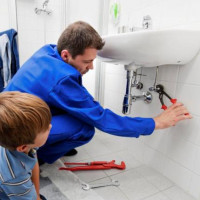 How to fix the bathroom sink to the wall: a detailed instruction on how to fix it
How to fix the bathroom sink to the wall: a detailed instruction on how to fix it  Small washbasins: varieties, photo-selection of options and features of choice
Small washbasins: varieties, photo-selection of options and features of choice 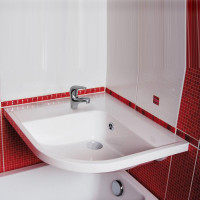 Hanging bathroom sink: step-by-step installation instructions
Hanging bathroom sink: step-by-step installation instructions 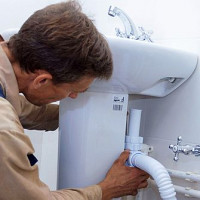 Bathroom sink with pedestal: installation and connection technology
Bathroom sink with pedestal: installation and connection technology 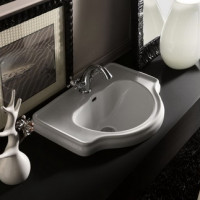 Countertop built-in sink: installation diagrams and analysis of installation features
Countertop built-in sink: installation diagrams and analysis of installation features  Corner sinks in the bathroom: general overview + installation instructions
Corner sinks in the bathroom: general overview + installation instructions  How much does it cost to connect gas to a private house: the price of organizing gas supply
How much does it cost to connect gas to a private house: the price of organizing gas supply  The best washing machines with dryer: model rating and customer tips
The best washing machines with dryer: model rating and customer tips  What is the color temperature of light and the nuances of choosing the temperature of the lamps to suit your needs
What is the color temperature of light and the nuances of choosing the temperature of the lamps to suit your needs  Replacement of a geyser in an apartment: replacement paperwork + basic norms and requirements
Replacement of a geyser in an apartment: replacement paperwork + basic norms and requirements
Quite often, blockages occur in the sink, especially in the summer in the kitchen due to various food waste. For me personally, the chemical was the best way to clean. It was poured, and after a certain time everything returned to normal, no need to exert great physical effort as with operations with a wire or plunger. Just be sure to remember about air circulation. So once I foolishly closed all the windows and the door to the kitchen, and after the pungent smell, the day disappeared from there.
Chemistry helps while the pipes are relatively new. Over time, such a plaque forms inside them that only mechanical cleaning methods begin to help. In general, they have not yet come up with a more reliable cable.
Yes, chemistry breaks well, even the cheapest, like the Mole, but it is far from suitable in all cases. Now many people put plastic pipes, not all of which are able to withstand the chemical method of cleaning. So fill it up at night, and in the morning not only a blockage will strike you, but it will make extra holes in the pipe. So, now the most optimal and effective way is a plumbing cable. And no great physical effort is required there. The only thing is that it’s not very convenient for one, but with an assistant, punching is pretty easy. The plunger is also suitable, but for small blockages.
Alexander, plastic pipes are completely resistant to chemicals. I would, perhaps. I was more worried about cast-iron pipes that they would corrode than because of polyethylene or PVC. Remember that in air it rusts and deteriorates faster - metal or plastic?
It is best to use not powder, but liquid products, so as not to spray harmful substances. For me, the “Mole” is the best way. It does not contain harmful substances, plus it kills germs. In addition, do not forget about preventive measures. If there is food left on the dishes, you wash in the bathroom, you have long hair that falls out and falls into the drain, etc., then do not try to push everything further, but throw it in the bin. Here the Russian hope for luck does not work.